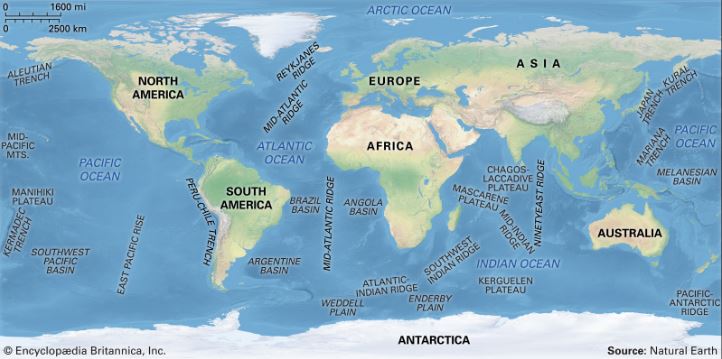
For many of us who don’t live near the ocean, we may not pay too much attention to the rising sea level. But what if the beaches are shrinking as a result of the rising sea level, if coastal communities will be erased as submerged land expands, and if mass migration moves toward higher grounds. Can you image what sort of landscape will be? The impact of rising sea levels is no longer in future tense. This video from NASA has a better visual to understand sea level rise.
You probably have heard about the famous Italian city Venice slowly sinking. Last month, the “City of Canals” tested its long-delayed flood barriers. I happened to come across the report while I was doing a case study of the climate adaptation strategy in Virginia Beach, Virginia. Both cities are fighting climate change-induced sea level rises. It has become not uncommon that floods inundate coastal cities especially after torrential rain. The multi-billion-euro Mose scheme has an interesting name, both a reference to the biblical prophet Moses who parted the Red Sea and an acronym, “MOdulo Sperimentale Elettromeccanico” in Italian, for “Experimental Electromechanical Module.” The Mose scheme was designed in 1984 and experienced multiple delays due to corruption and cost overruns. It is expected to be fully completed by the end of 2021. If only by then the world will have reined in the covid pandemic and tourists may return to see in person its inauguration. This June the municipality in Virginia Beach approved the sea level rise plan that will cost $3.8 million in a six-year span.
On the other side of the globe, China is bracing for extreme rainfall events and floods along the Yangtze River and its tributaries in South China. China paid a heavy price for the massive floods in 1998 that took nearly 4,000 lives, displaced millions and cost an estimated US$24 billion (in exchange rate for 1998) in economic loss. The disaster was considered the worst flood in China in over 44 years. It has since become a baseline for many regional, and even national, flood control public policies. As the country has implemented climate adaptation strategies including nature-based flood protection, the benefits are apparent in this year’s extreme flooding. Nature-based solutions, as the name suggests, is an approach that uses natural systems to provide critical services, such as green infrastructure in urban areas, wetlands for flood mitigation, and mangroves to reduce coastal erosion.
China’s “Sponge City Initiative” is a good example of adopting nature-based solutions. The concept of “sponge cities” was originated from Hyderabad, India and adopted by many Asian cities including Vinh, Vietnam and Shanghai, China—one of the most flood-prone cities in the world. Like a sponge that is full of small holes and can absorb a lot of liquid, Chinese sponge cities are introduced to permeable roads, rooftop gardens, rain gardens, green space and blue space such as ponds and lakes in urban city planning to retrofit existing infrastructure. At least 30 cities have signed on the initiative with more cities expected to join. China’s “Sponge City Initiative” has an ambitious goal: by 2020, 80% of urban areas should absorb and re-use at least 70% of rainwater. It is hard to gauge how effectively sponge cities are meeting this big hairy audacious goal, aka BHAG. Pingxiang, Jiangxi province, is one of the 30 sponge cities but this July the city was flood-ridden. This image from central government’s official website (click here) shows rescue workers treading the above-knee deep floodwater to evacuate residents.
Another common strategies for managing sea level rise is to elevate coastal structures and build seawalls—the man-made solutions, such as Venice’s Mose scheme. Few Western media covered Shanghai’s gigantic seawalls that extend hundreds of kilometers. Land subsidence that happens in Venice, Virginia Beach, New Orleans, and Central Valley in California also happens in Shanghai. The “Paris of the East” has sunk on average about 8 millimeters annually since the mid-1970s. A combination of sea-level rise and land subsidence leads to shoreline retreat. So, beachgoers, cherish what you can have on your favorite beach and take as many photos as you can! Despite the warning from scientists about adverse effects of the seawall on coastal wetlands, within two-year’s time, Shanghai has constructed 520 kilometers (323 miles) of what the authorities called “the country’s first eco-friendly seawalls,” stretching across the Hangzhou Bay with massive mechanical gates to regulate overflowing rivers.

Similar flood barriers are also seen in Virginia Beach’s Sea Level Wise adaptation strategy and Venice’s Mose scheme. The Shanghai version of coastal land reclamation looks similar to the Maasvlakte, a man-made extension of the Port of Rotterdam in the Netherlands. When it comes to success story of adaptation to sea level rise, go to the Dutch!
From Asia to Europe and Africa to the Americans, sea-level rise is inevitable. The world is flat, as Thomas Friedman puts it. And the world is also fragile as the World Wide Web is switching from information sharing with no boundaries to ideological and territorial ownership. The wall is built in the leaders’ heads faster than at sea to prevent coastal flooding. If we do not scale up mitigation efforts and prioritize climate adaptation in a concerted effort, the rising sea level in a flat world is gradually affecting billions of people regardless of their socioeconomic status. It is estimated many parts of coastal Asia might be submerged by 2050 if nothing is done to combat rising sea levels. In the field of sustainability and marine science, the Blue Carbon Initiative is a marvelous idea to deal with the carbon stored in coastal and marine ecosystems. We may not change the fact of shoreline retreat but we can do something to slow it down.
We are heading for an irreversible future—the impact of human activities is setting new records at a quicker pace, if not as competitive to new records of the covid infections. May 2020 was the hottest May ever recorded. July 2019 was the hottest July ever recorded. The hottest five years ever recorded were the past five years. We don’t need to live by the sea to understand the ocean as a solution to climate change-induced sea level rise. We don’t need to have a STEM-related educational background to report climate change—after all, we’re all witnesses of the history-making natural phenomena. We talk about weather every day! And if you are a seafood lover, you should be worried as our oceans are polluted by ubiquitous plastic. You might eating plastic as your oysters are mistaken microplastics for food. I’ll save this topic for the future. (Specifically, check back in two weeks.)
